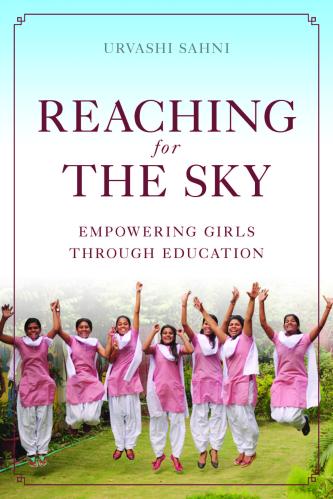Schools are powerful sites for change and social transformation. As the founder of the Study Hall Foundation’s (SHEF) Prerna School—a K-12 school for girls and boys in Lucknow, India—I have seen first-hand how schools can change children’s lives. But to fulfill school’s transformative promise, we must revolutionize what we teach and how we teach it. The curriculum must expand its scope to include a strong focus on democratic values of equality and liberty. Lessons in equality—particularly gender equality—are as important as lessons in math, science, and language, and should be instilled in students and teachers alike.
When it comes to gender equality both globally and in India, discourse around girls’ education is particularly charged. There is an urgency, as people now clearly understand that developmental promises cannot be fulfilled unless gender equality is taken seriously. Generally, they assume a complete, high-quality secondary school education is a vital pathway to achieving girls’ empowerment and gender equality.
The term “empowerment” is widely used in international development discourse in close conjunction with girls’ education and gender equality, implying a necessary correlation. Many scholars, researchers, and practitioners have challenged this assumption, noting that mere access and even completion of school is not enough. Instead, as I argue in my policy brief, there should be a focus on process, content, and curricula that critically addresses inequitable social norms and structures, so girls’ education can be truly empowering and result in improved life outcomes. My policy brief recommends the following commitments that Indian policymakers can make to achieve this vision:
a) Introduce a new compulsory subject: Gender Education—aimed at developing a social and political understanding of gender in as part of the official school curriculum for both boys and girls, at the post-primary level in all state and central education boards. Explicit conversations and critical dialogues on gender bias and power should officially become part of the student experience. Defining Gender Education as a standalone curricular subject will give it legitimacy and create a stronger impetus for incorporating gender in the classroom. This will also necessitate the development of the requisite curricular and teacher materials, which the National Council of Educational Research and Training should create in collaboration with NGOs like the Prerna School.
b) Incorporate gender education compulsorily, in pre- and in-service teacher trainings and teacher education programs. Teachers are potentially powerful agents of social change, provided they can perceive themselves as such. Training in effective communication of gender-related issues with the community should also be included in pre-service training. All of the above implies intensive in-service training of teachers and educators, along with the development of teacher training materials and curriculum, which should be created by the State Education department in collaboration with NGOs.
These recommendations are grounded in fifteen years of work at the Prerna School, which has mainstreamed gender education in its official curriculum with great success—leading to impressive learning and life outcomes. In Prerna School, the completion rate is 88.1 percent, out of which 97 percent progress to higher education, and child marriage rates have declined significantly. SHEF has implemented its gender education program in 1,000 schools across Uttar Pradesh and Rajasthan with impressive results.
For many years, the government of India has recognized women’s empowerment, gender equality, and access to education as central to its social policy agenda. This commitment is reflected in a variety of national policy documents—from the 1950 Indian Constitution to the 2009 Right to Education Act—and through India’s commitment to international frameworks such as the Sustainable Development Goals. For international and national policies alike, India has affirmed gender equality to be: (a) a core value of democratic India and (b) a social policy priority for the central government. Together these commitments form a robust policy mandate that supports the integration of gender equality and empowerment programming in post–primary education in schools across India.
Apart from this, there is a growing outcry against the rise of gender-based violence. Four rapes an hour are reported by the National Crime Records Bureau. At every social and political platform there is a call to change deeply entrenched patriarchal ‘mindsets.’ School education is a good place to facilitate mindset change in a whole generation of boys and girls. To do this, it is time we made our curriculum truly progressive by including lessons in gender equality.





Commentary
To empower girls in India, make gender education compulsory
December 19, 2018